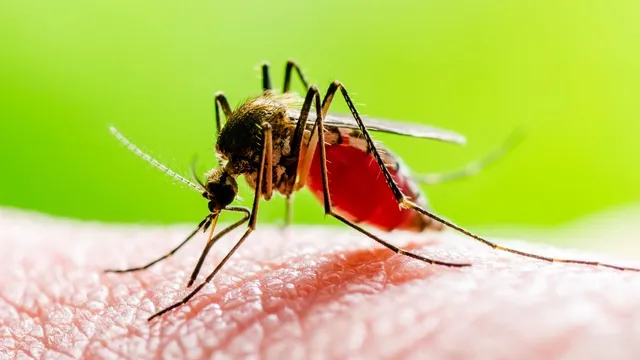- By Shivangi Sharma
- Wed, 23 Jul 2025 04:14 PM (IST)
- Source:JND
The World Health Organization (WHO) issued a stark warning this week about the growing threat of a global chikungunya epidemic. This mosquito-borne virus, which causes severe joint pain and fever, is resurfacing in several regions and showing troubling signs of widespread transmission. WHO officials are drawing alarming parallels between the current outbreaks and the devastating chikungunya epidemic of 2004–2005, which affected hundreds of thousands of people.
Dr. Diana Rojas Alvarez, a medical officer at WHO, emphasized the urgency of the situation during a press briefing in Geneva. “We are seeing history repeat itself,” she said, noting that the virus has been detected in 119 countries and now places an estimated 5.6 billion people at risk. Recent outbreaks have been reported in the Indian Ocean region and are spreading to Europe, Southeast Asia, and Africa.
What Is Chikungunya?
Chikungunya is caused by the chikungunya virus (CHIKV) and is transmitted by infected female mosquitoes, primarily Aedes aegypti and Aedes albopictus. These are the same mosquitoes that also spread dengue and Zika viruses. Active during the daytime, they typically breed in standing water found in containers and urban environments.
When a mosquito bites an infected person, it ingests the virus, which then replicates inside the mosquito. After several days, the virus reaches the mosquito’s salivary glands, enabling it to infect the next person it bites. This creates a continuous cycle of transmission, especially in densely populated or poorly sanitized areas.
Symptoms
Symptoms usually appear 4 to 8 days after a person is bitten by an infected mosquito. The illness often starts with an abrupt fever and is accompanied by severe joint pain that can be debilitating. Additional symptoms may include headache, muscle pain, nausea, rash, and fatigue. While most patients recover within a week, joint pain can persist for months or even years in some cases.
Though chikungunya is generally not fatal, it can lead to serious complications, especially in vulnerable populations such as newborns, the elderly, and people with pre-existing health conditions. Rare but severe outcomes include eye, heart, and neurological problems, with some cases requiring hospitalization due to organ damage or even death.
Diagnosis And Treatment
In the first week of illness, the virus can be detected through molecular tests such as reverse transcriptase–polymerase chain reaction (RT-PCR). Later in the course of infection, serological tests can identify antibodies to the virus, providing confirmation of recent exposure.
Currently, there is no specific antiviral treatment for chikungunya. Management is focused on relieving symptoms, particularly joint pain and fever. Paracetamol (acetaminophen) is recommended, especially in the early stages before dengue is ruled out, as other pain relievers like NSAIDs can increase bleeding risk.
ALSO READ: PM Modi Embarks On Much-Awaited Tour Of UK, Maldives, FTA Signing On Cards; Check Full Schedule
Prevention
Two chikungunya vaccines have recently received regulatory approval or have been recommended for specific populations. However, they are not yet widely available. WHO and global health experts are reviewing the data to determine how best to deploy these vaccines in high-risk areas.
Until vaccines become more accessible, the most effective strategy remains mosquito control and personal protection. This includes:
Wearing long-sleeved clothing to reduce skin exposure.
Using mosquito repellents containing DEET, IR3535, or icaridin.
Sleeping under insecticide-treated mosquito nets, especially for infants and the elderly.
Installing window and door screens to keep mosquitoes out of homes.
WHO stresses that public cooperation is essential in preventing a large-scale outbreak. Communities must actively reduce mosquito breeding grounds by emptying and cleaning water containers weekly, properly disposing of waste, and supporting local vector control programs. In outbreak situations, health authorities may also apply insecticides to kill adult mosquitoes and larvae as an emergency measure.
Chikungunya may not be a household name, but its threat is real and growing. With more than half the global population at risk, WHO’s urgent call for action is a reminder that emerging diseases, especially those transmitted by mosquitoes, remain a serious global health challenge. Proactive surveillance, community engagement, and accelerated vaccine access will be vital to preventing another global epidemic.

